▸ Table of contents:
1. Introduction
Review your processes, refine and classify your inventory to optimize your supply chain.
Supply chains have become more complex to support globalization and the increase in customer demands. Customers often place complex orders, expect shorter lead times and want tailored experiences.
To successfully deliver the right amount of inventory to consistently meet demand, you need full visibility of your supply chain so you can focus on the processes that need attention. With ongoing disruptions across supply chains, you should actively review your data and adjust your inventory planning where necessary.
- STEP 01: Review your suppliers by following best practices to ensure you forecast accurately and plan for longer lead times.
- STEP 02: Refine your inventory Key Performance Indicators (KPIs) to improve the overall visibility of your inventory holding and fill rate.
- STEP 03: Classify your stocked items to focus on inventory that will create the most value for your business to drive sales.
Proactively reviewing supply chain practices will help inventory planners confidently plan, manage and optimize inventory during challenging circumstances.
2. Has your supply chain missed the boat?
While disruption to the supply chain is not entirely new, the last twelve months have globally presented many complex business challenges. Each challenge has created a domino effect on intricate logistics and supply chain processes, making it difficult for demand planners to forecast inventory to meet customer demand confidently.
According to Ship Technology, “Freight shipping has found itself in a unique situation where unforeseen events have left a global shortage of containers, which has had a domino effect down the supply chain, disrupting global trade.” They continue, “Shipping companies began reducing the number of cargo ships that were being sent out. This not only stopped the usual flow of imported and exported goods, but also saw empty containers not being collected.”
Another event, such as the Colonial Pipeline ransomware attack, resulted in the majority of the 5,500-mile pipeline, which supplies half of the US East Coast’s fuel number of days, creating an instant backlog across their supply chain. These external events create one big challenge: costly, longer lead times in receiving supply, offering no certainty to plan your procurement process effectively.
Apart from longer lead times and a diminishing supply of certain raw materials, industries also face an increase in the costs of raw materials, transportation, and a scarcity of certain metals.
According to insights from MetalMinder, “raw material shortages – for steel, aluminum or other metals — continues. For some sectors, those accompany parallel shortages in materials like resins and in specific components, like semiconductors. Consumers are trying to judge how elevated prices and material shortages are likely to play out over the second half of the year. They are struggling to see how much material shortages will be counterbalanced by a slowdown in demand as a result of shortages in other materials.”
With the continued sense of uncertainty, two facts remain constant…
- Disruption is not entirely new to supply chains and will, unfortunately, continue.
- Your business still needs to operate and serve its customers.
Businesses have to review their manufacturing, transportation, and warehouse networks and invest in more safety stock to ensure they have enough supply to meet demand.
Has your business experienced challenges due to the global pandemic, natural disasters, or the effects of political trade wars?
It’s essential to note the learnings, put measures in place by following best practices below, and safeguard your processes as much as you can to strengthen your supply chain as you move forward.
Ask yourself these two questions:
- Is your supply chain set up to help serve your customers?
- How can your inventory data help you plan more efficiently with your suppliers?
Best practices
- Review your current supply chain processes to mitigate potential risks
- Adjust your inventory data to help with your demand planning
- Increase communications with your suppliers and customers for real-time market intel
- Source alternative suppliers to deliver inventory on time
- Manage your inventory effectively to help plan for unexpected events
Let’s explore these best practices to help you develop a resilient supply chain and make the right inventory decisions to support your business’s objectives.
Review your current supply chain processes to mitigate potential risks
Analyze your supplier data, make the necessary changes, and then implement them across your supply chain. Having that granular insight into your supply chain ecosystem is vital, from placing the first purchase order through to delivery to your customer, will help you plan around problem areas and identify opportunities for change.
- Review each aspect of your supply chain and identify potential risk areas that can disrupt your supply journey.
- Create an overview of your supplier network taking note of their manufacturing and distribution locations.
- Review the readiness of your suppliers and what contingency measures they have in place when they can’t deliver.
- Understand the flow of goods and the logistics involved. Often a supplier will use more than one transport route. How will that affect lead times and cost?
- Identify where you have experienced delays in shipping, manufacturing, or experienced shortages of certain materials.
- Find out what security measures your suppliers have in place to prevent cyberattacks. According to Supply Management, the media outlet of CIPS, “supply chain attacks rose by 42% in the first quarter of 2021 in the US, impacting up to seven million people.”
As new events emerge, you may need to perform regular reviews of your supply chain. In a recent article in the online platform, SupplyChainBrain says, “review your strategies regularly, to learn what works and what needs to be improved.”

Adjust your inventory data to help with your demand planning
It’s safe to say you can’t rely on last year’s data to help with your forecasting as that data is not a realistic representation of your inventory flow as a result of disruptions caused by the global pandemic.
To help remain flexible in your demand planning, you need to select data from previous months that you feel best represents your current situation and then use that information to help with your demand planning. You need to be mindful about shifting through past data manually, which can be timeconsuming and lead to errors.
With an inventory management software solution, you can work smarter to select alternative months that are better suitable for your demand planning.
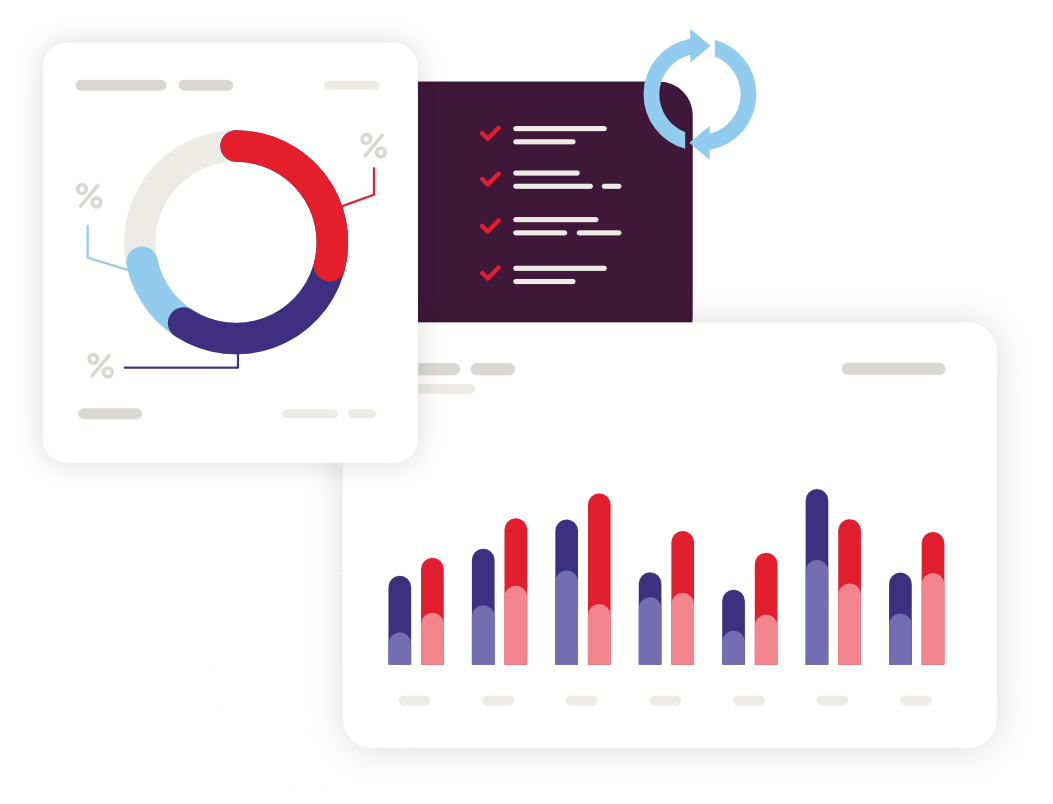
Increase communications with your suppliers and customers for real-time market intel
If you don’t ask, you won’t know! Developing a close relationship with your suppliers can reduce lead times on critical items. Invest the time in developing a solid relationship with your suppliers, your supplier’s suppliers, and your customers. Staying connected and knowing what your suppliers are experiencing, whether their order availability, reliability of delivery times, or their future demands, will help you adapt your planning.
As soon as you receive feedback, you can adjust inventory lead times and update your customers directly so they can also plan accordingly
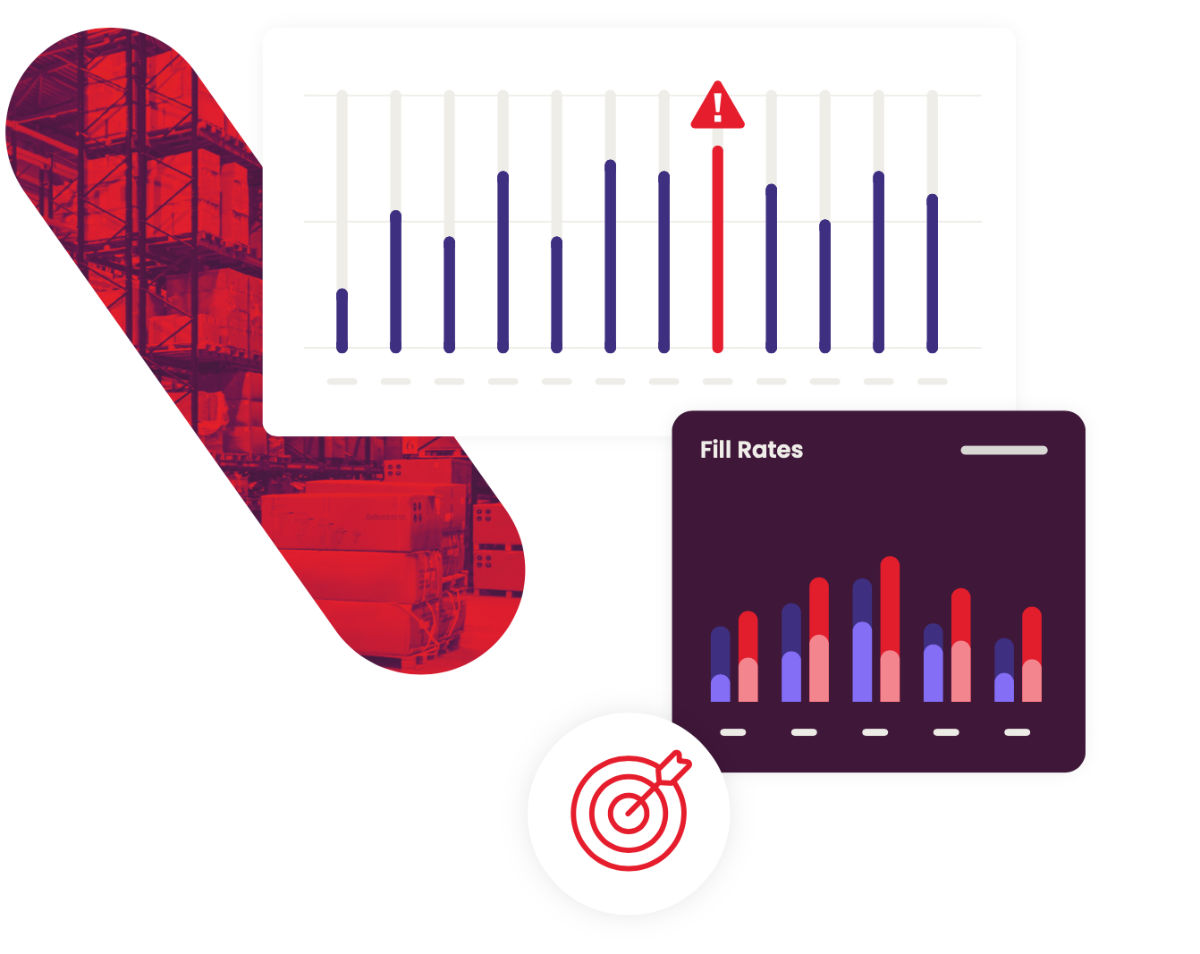
Source alternative suppliers to deliver inventory on time
And use them! Keep your selection of suppliers open by networking and building solid relationships with alternative suppliers. Stay up-to-date with their terms and conditions, processes, and new product lines.
If you have a bad experience with your regular supplier or have delays, you will have access to an alternative supplier who already knows and trusts you.
Manage your inventory effectively to help plan for unexpected events
Two critical inventory KPIs to help optimize your supply chain is classifying your inventory and ensuring you factor in sufficient safety stock.
Classifying your inventory allows you to focus on 20% of the stock items that give you 80% of your sales.
- The first step is to identify your obsolete items and non-stocked items and then leaving you to further classify stocked items according to value and velocity. This process will help you understand the movement of your inventory and how to prioritize the most essential and fast-moving items that drive big profits.
- Knowing who your inventory “movers and shakers” are, you can immediately review the performance of those suppliers and evaluate if you will be able to meet demand.
Safety Stock can be your inventory lifeline, within reason.
- Define your safety stock requirements. Once you have classified your inventory and better understand your sales and supplier performance, you can now focus on the stock quantities you need to keep as insurance or safety stock. Your safety stock is there to protect you when your supplier lets you down or when your demand increases. Measure, and report monthly on the above factors. Remember, you will see improvement in the aspects you measure, and that visibility will help your team focus on the correct elements of your inventory.
- Re-evaluate your safety stock. If you don’t use your safety stock, you are holding too much stock, and you are wasting working capital for your business. Continuously re-evaluate your safety stock levels and parameters and adjust where needed.
Remember, why retain inventory that you know you won’t sell? If you eliminate non-saleable products, you leave space and working capital for the inventory you can sell.
Your supply chain solution
Be prepared with accurate data to minimize your risk.
To remain competitive today, you need visibility of how your suppliers perform to provide the highest possible level of service to your customers. Using accurate information about your suppliers, you can determine who delivers stock to you on time and in full. Having this visibility will help you plan and invest in the right amount of inventory while factoring in a cost-effective amount of safety stock.
3. The most important KPIs to assess your supply chain’s inventory
As an inventory planner, you’ll know that the supply chain is in flux, and it has become crucial to set the necessary inventory KPIs to help you make decisions for your business and make sure you serve your customers on time and in full. If you haven’t set these yet, you’re reading the right article! The more volatile the supply chain becomes, the more regularly you have to establish, review and measure your KPIs to help organize and plan your inventory accordingly.
Inventory visibility aims to show all internal records of your inventory, and it’s crucial for your supply chain so you can better stock, monitor and order relevant items at the necessary time before potential stockouts occur. Having complete visibility of your inventory holding is a complicated but necessary process.
Entrepreneur states, “Knowing what’s happening in your supply chain is vital, especially during and after market disruptions like these… Having a 360-degree view of the entire supply chain network is of paramount importance. The lack there-of can result in supply chains being disorganized, expensive and inefficient.”
Key Performance Indicators (KPIs) help you monitor and make vital decisions for your inventory. What are some of the critical inventory management KPIs for your supply chain, and how do they affect your inventory holding?
Keeping the above idea in mind, supply chain disruptions, like…
- complex customer orders
- a lack of data and insights
- a shortage in shipping containers
- and transportation capacity
…can add extra strain to monitoring, tracking, and having complete visibility over your inventory holding. However, if you have the right inventory KPIs in place, your supply chain is well on its way to success.
According to Material Handling & Logistics…
“With today’s immense challenges due to the COVID-19 pandemic disrupting and debilitating the traditional retail model, plus the extreme volatility in supply and demand experienced by so many omnichannel organizations, the need for an efficient and agile supply chain has become ever more apparent. A not only resilient, but optimized supply chain is imperative to success, directly impacting sales, customer service, brand loyalty, and competitive advantage.” You should monitor your inventory KPIs constantly to make sure your inventory holding is fit-for-purpose.
You’ll need to ask yourself the following questions…
- What is a KPI?
- What inventory KPIs should I have in place?
- How do I set, refine, and track my inventory KPIs?
- What are the benefits of setting KPls for my inventory?
- What demand planning solution can I implement?
1. What is a KPI?
Before we can start defining inventory KPIs, we will make a definition upfront. G2, business software and services reviews platform, says…
A key performance indicator (KPI) is a way to evaluate the success of an activity that an organization or department engages in. KPIs are values that can be measured against desired results. High-level KPIs are focused on the overall performance of an entire business, while low-level KPIs focus on the performance of individual departments within that business.
You need to remember that your business has KPIs for production, processes, cash flow, and profitability, which ultimately measure your business operations’ impact.
The business goals and objectives will influence your inventory policies. The inventory KPIs are then used to monitor the inventory policies, track inventory turnover and ultimately measure how well your inventory performs based on your sales.
2. What inventory KPIs should I have in place?
You can’t manage what you don’t measure, and you’re flying blind if you don’t measure what you do in your inventory or business. Your KPIs are like your North Star, and they affect the overall performance and visibility of your inventory holding.
As Multichannel Merchant notes, “Today’s shopper wants visibility into the entire order fulfillment process – from accurate availability at purchase to tracking information during shipment. Fulfillment visibility is no longer a nice-to-have but a mustto-compete in ecommerce and improve your bottom line.”
At Netstock, we divide inventory KPIs into two parts, namely Stock holding and Fill rate.
Stock holding
The amount of inventory a company keeps for future use compared to an ideal model.
a. What is your inventory value compared to the benchmark in your industry?
b. Where are you in excess?
c. Where are you ordering too much of an item which results in excess stock
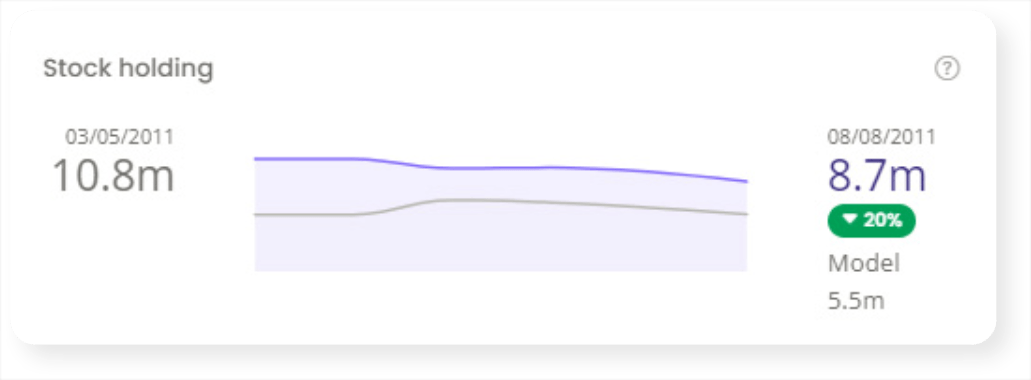
Fill rate
The fill rate is the percentage of demand met by immediate stock availability. Track how well you’re servicing your existing customer base compared to what you’re targeting.
a. Measuring the fill rate and how well you serve your customers.
b. When and where do stock-outs occur?
c. Where will you potentially stock out, and when will you run out of stock in the future?
d. Where are you forecasting too much or too little? If you forecast too much, you’ll have excess stock. If you don’t forecast enough, potential stock-outs will occur
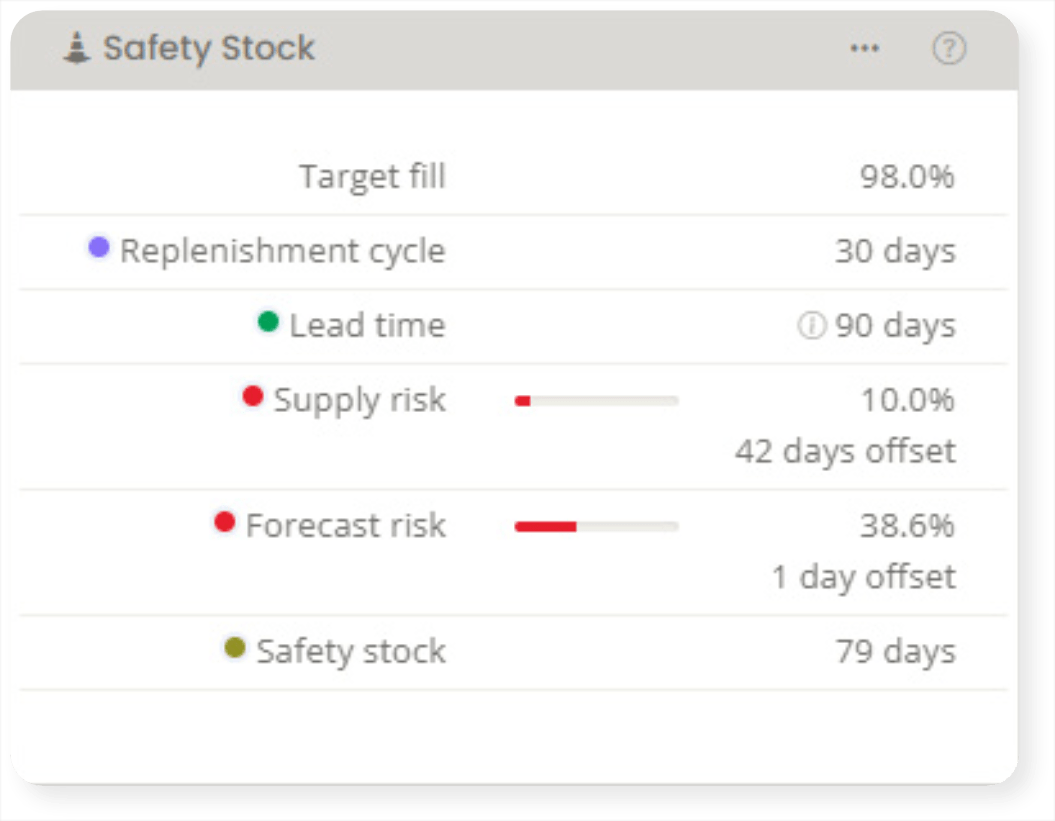
3. How do I set, refine and track my inventory
When you start looking at your inventory, you need to know the value of your inventory holding in your business relative to how much excess stock you have. Is the value of your inventory holding increasing or decreasing? It’s vital to…
- Classify your items by looking at each item’s abvalue and velocity.
- Understand your fill rate targets and track towards them. If you keep getting closer to the target, then you know you are going in the right direction.
- If you measure your inventory value, you need to compare it to previous periods respectively.
- Keep tracking it. You have to know what you want to measure, your target, and how it’s changing over time.
In a more stable environment, you can review your KPIs less frequently.
When reviewing, ensure that you examine your upstream supply and downstream demand. Frequently review your orders and see if they align with your demand and whether your ordering cycle correlates with the current reality of receiving stock from your suppliers. We recommend reviewing the highest value and the fastest moving spend more closely to get the best value for your spend.
4. What are the benefits of setting KPIs for my inventory?
The use and selection of inventory KPIs help evaluate operational processes and turn them into financial records.
Selecthub believes, “The purpose of using metrics and KPIs across inventory control systems is to drive the most effective behaviors, decisions and strategies possible. Metrics and KPIs that reinforce the silo-based behavior of many manufacturers (such as data and knowledge hoarding) are being replaced by those that reward collaboration. With valuable metrics and increased collaboration, businesses are able to improve on-time deliveries, increase customer satisfaction and reduce operating costs.”
If you don’t have a demand planning solution and KPIs in place, your inventory value will be inaccurate, and you will experience potential stock-outs with longer lead times, and customers will be unhappy and leave. If you don’t know what will happen in the future, you can’t plan for today and make sure your business will go where you want it to be.
5. What demand planning solution can I implement?
The Netstock Inventory Dashboard allows you to effectively manage what you measure well in your inventory, namely stock holding and fill rate. Focus your attention on the top 5 items that will help you positively impact your inventory.
The key is to work on the 80/20 principle – focus on 20% of the stock items, which will give you 80% of the sales and help you make a massive and intelligent impact on getting your inventory on the right path.
RAM Products
RAM Products, established over 30 years ago, is a privately-owned Maintenance Repair and Operations (MRO) business. The company supplies parts to B2B businesses across the USA and they are a prime example of how using Netstock helps them achieve overall inventory visibility. They trust the data and deliver excellent customer service and support.
Using Netstock, we merely change our fill rate percentages and reduce those by around 20% per classification. By adhering to the Netstock order recommendations, we saw our inventory come down,” says James Shotts, VP of Operations, RAM Products.
Classifying your inventory allows you to focus on the right stock to meet demand, which helps you retain customers and remain competitive.
4. Boosting your sales is as easy as ABC
Consumers across the US today have increased their spending! There is a glimpse of optimism across businesses as the US economy experiences this upturn. In a recent article in the New York Times, “consumer spending rose 2.6 percent in the first three months of the year, with a 5.4 percent increase in spending on goods accounting for most of the growth.” With this in mind, you should allocate and focus on the stock items that align with your customer’s demand. While consumer demand will play a vital role in helping to restore economies globally, inventory planners and management teams will still need to navigate erratic demand when planning their stock replenishment. The World Economic Forum states, “…the uneven impact of the pandemic means there won’t be a single uniform consumer spending recovery; rather
there will be many different recoveries based on circumstances, geographies, age, and income.”
As a planner, you should:
- Review your inventory data and adjust your planning, where possible, to reduce your inventory and improve your fill rate.
- Have clear insights into your inventory key performance indicators (KPIs).
- Classify your inventory to help you forecast more accurately and avoid experiencing excess inventory or potential stock-outs.
How many times have you found yourself in this scenario?
You have an active inventory list of over 6,000 lines and a total of about 20,000 SKU’s.
Are you able to identify high-priority items?
Do you know which items to reorder?
Which items are sitting in excess?
But, more importantly, do you know what items
need attention right now?
Allocate your working capital towards inventory that will give you a high return on investment
Based on the Pareto principle, the ABC analysis looks at classifying your items so you can focus on the 20% of the items that will give you 80% of your sales. When applying the ABC analysis to classify your inventory, you arrange your inventory by identifying your highprofit generating items, reviewing which items are slowmoving, and then establishing if you should stock these slow movers in your warehouse.
The ABC analysis
Step 1
Identify and remove your obsolete and nonstocked items.
A-items
Profit-generating, high moving items
(which make up 80% of sales)
B-items
Fast moving inexpensive items
(which make up 16% of sales)
C-items
The bulk of your slow moving items
(which make up 4% of sales)
Step 2
Based on previous sales data and or your future forecast, breakdown your inventory into:
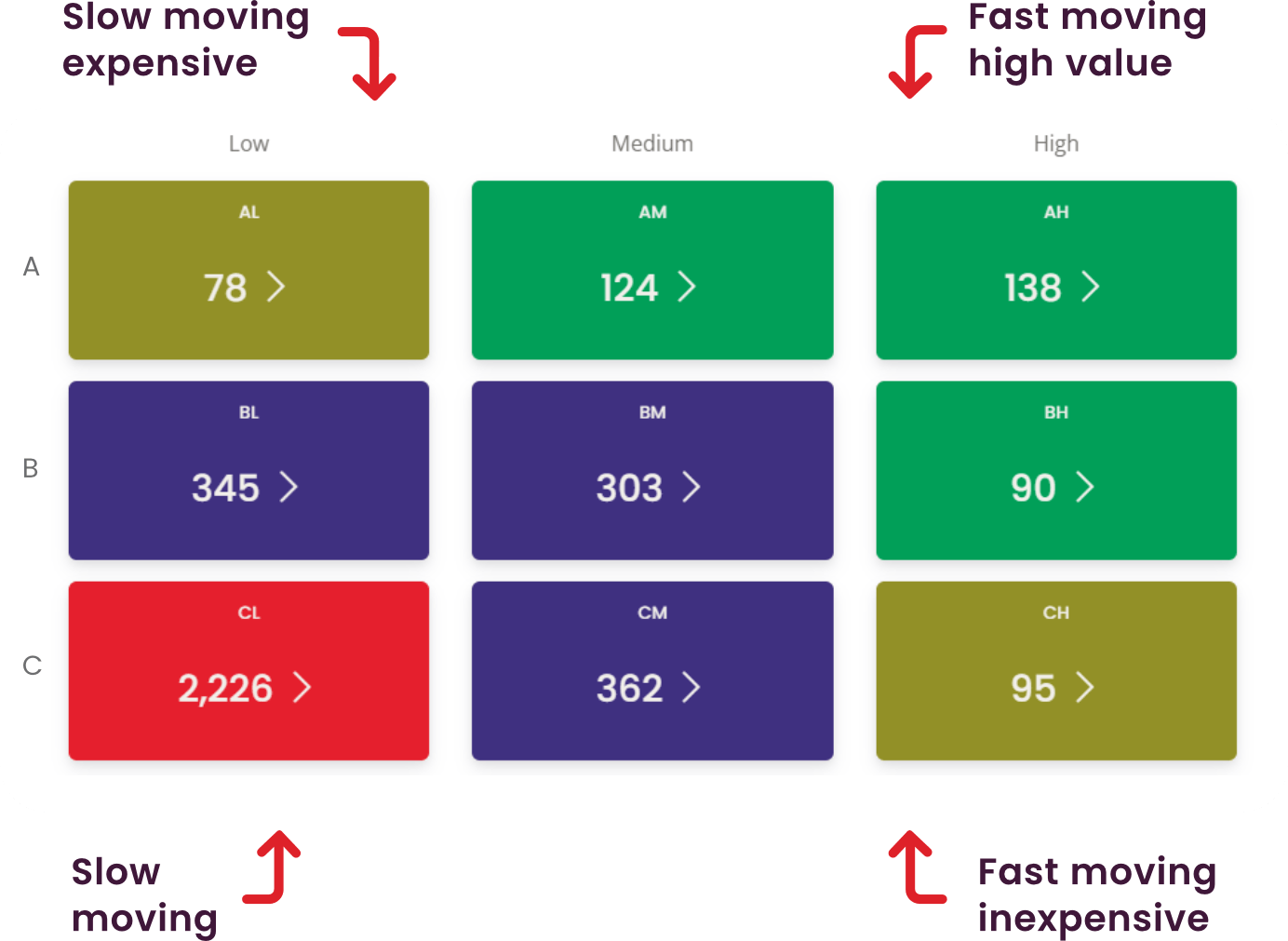
The ABC analysis will help you to…
- Focus on items that lower your working capital.
- Know what items to re-order.
- Reduce your obsolete stock.
How classifying your inventory can help boost sales
Classifying your inventory is like having a roadmap for each inventory item, showing you where you need to focus your attention, your working capital, and where you can potentially make improvements to help manage your stock items.
Knowing your high moving items will help you to:
- Forecast more accurately based on the demand and ensure you don’t stock out of these items.
- Develop your relationship with suppliers to ensure your supply consistently arrives in full and on time. Perhaps ask your supplier for a new pricing model as you will be ordering larger quantities of these items.
- Prevent stock-outs of these items so you can consistently deliver to your customers.
Knowing your slower-moving items, you can:
- Free up your time and resources to focus on more critical items or other aspects of your business.
- Create pricing campaigns to sell slowmoving items quicker. This will reduce the costs of storing, insuring, and marketing those items.
Reduce your inventory value with Netstock.
Select Hardware
Select Hardware is a leading one-stop supplier of premium hardware, providing both trade and retailers with a choice of over 4000 competitively priced products and numerous market-leading brands. They are a perfect example of how classifying their inventory helped their team focus on the right inventory.
“The Netstock classification matrix and policy parameters have completely changed the way we look at inventory. This has allowed us to focus on the inventory that is important to our business and ensures that we have our fast-moving items on the shelves at all times. We can also set stocking parameters on the slower movers, reducing stock and capital,” says Steve Killworth, Operations Director at Select Hardware.
Connect with one of our inventory experts to discuss how Netstock’s classification feature can help you identify your high- priority stock items that will drive sales in your business.
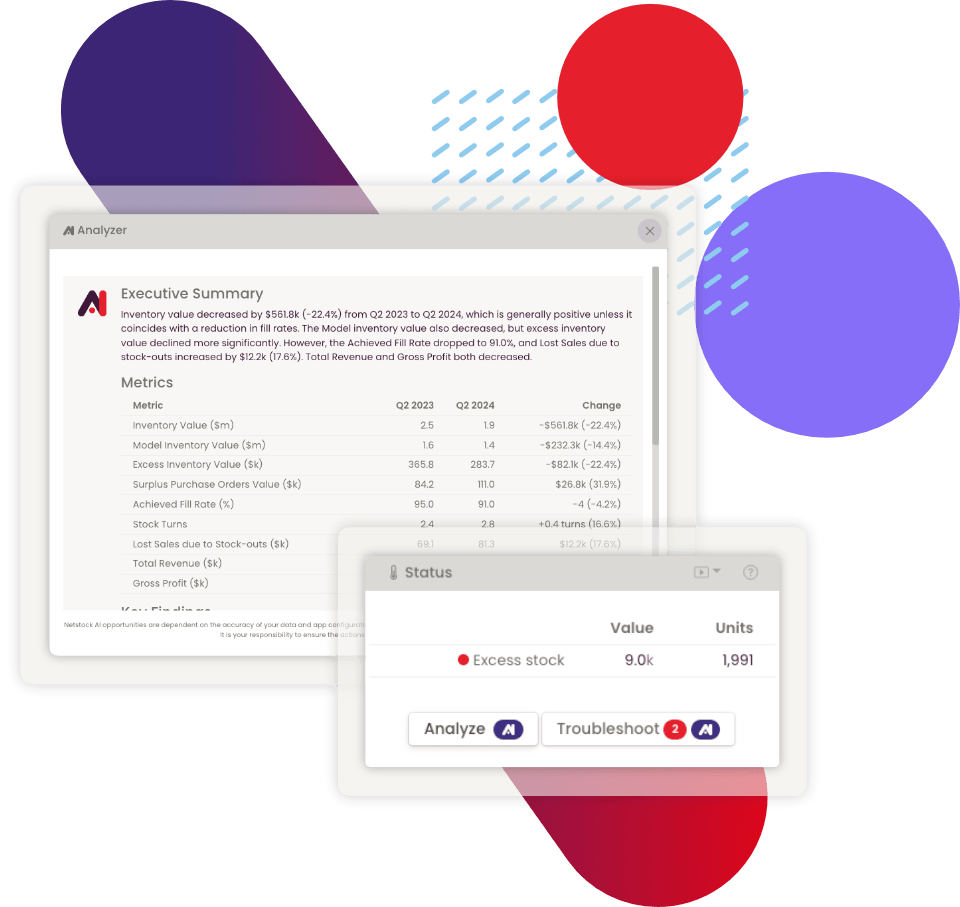
5. Conclusion
Netstock’s intuitive cloud-based software can help optimize your inventory allowing you to…
- Save time on planning and place orders quickly.
- Retain your customers and increase sales by avoiding stockouts.
- Release working capital tied up in your inventory by reducing excess inventory.
Save time, money and resources.
Get in touch with an inventory expert, and let’s unpack how best to manage and plan your inventory.
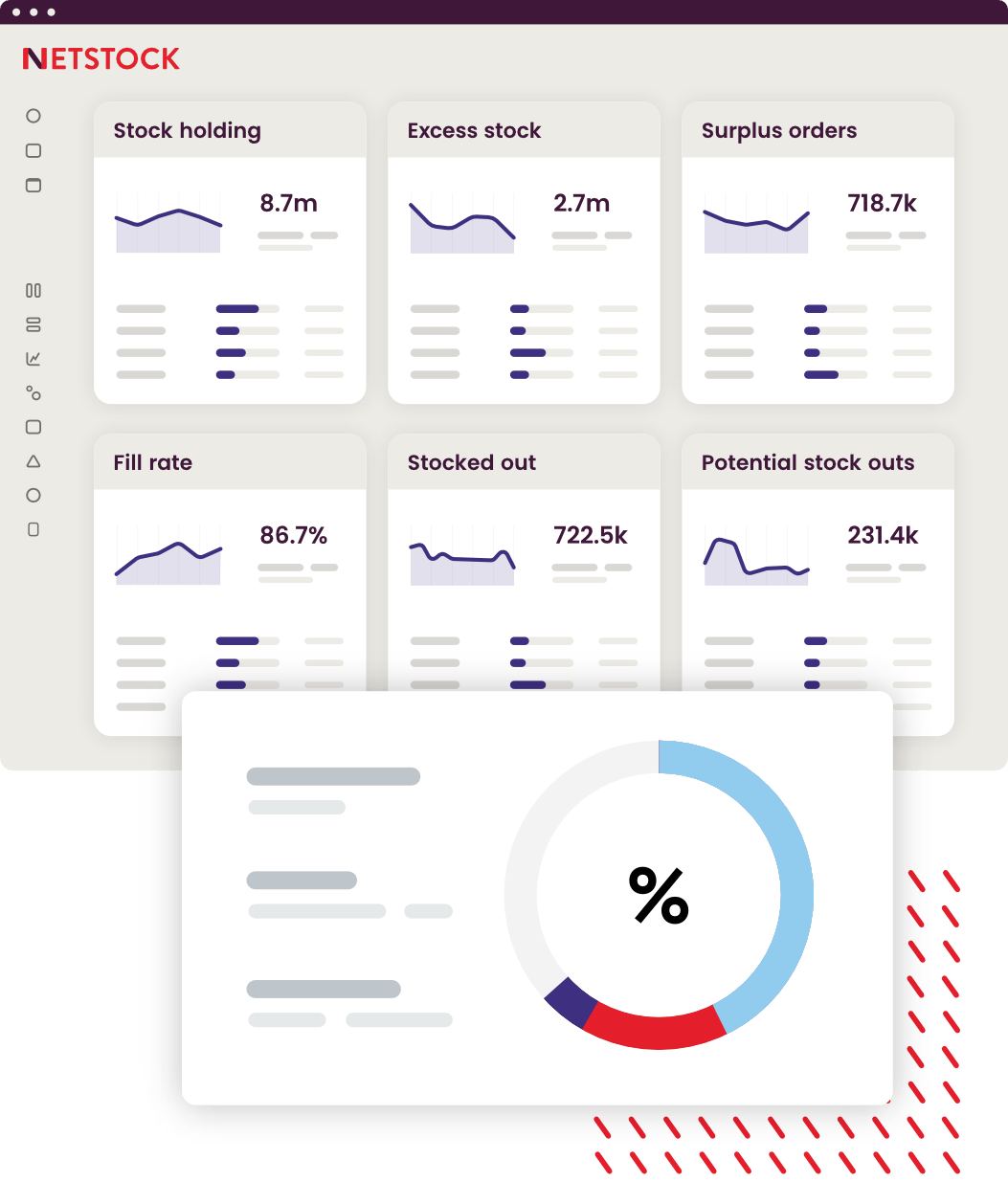
More guides

5 Steps to Managing Your Suppliers like a PRO!
Effective supplier management goes beyond transactions; it’s about collaboration and shared goals.

Navigating Tariffs: How SMBs Can Stay Prepared, Proactive, and Profitable
Struggling with rising tariffs and supply chain chaos? Discover how SMBs are tackling today’s biggest planning challenges.
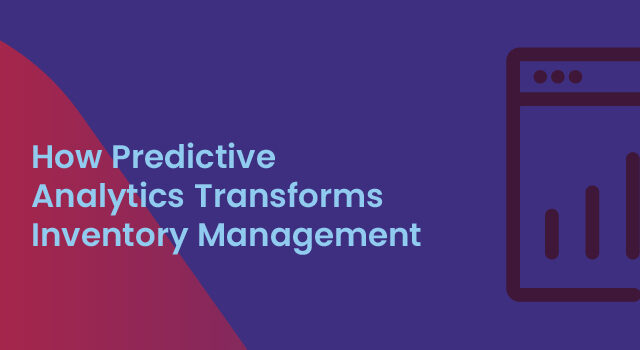
From Chaos to Control: How Predictive Analytics Transforms Inventory Management
Imagine this: You’re a supply chain manager at a mid-sized retail company in December.

Make Smarter Inventory Decisions with Generative AI
Picture this: A boutique owner stares at her holiday inventory plan, remembering last year’s costly mistakes.
AI+Inventory. Built for your business.
Accelerate supply chain planning for building supplies with predictive forecasting software.
Request a demo and see Netstock in action.
Ready to start your inventory AI journey?
Discover more about Netstock’s demand and supply planning software